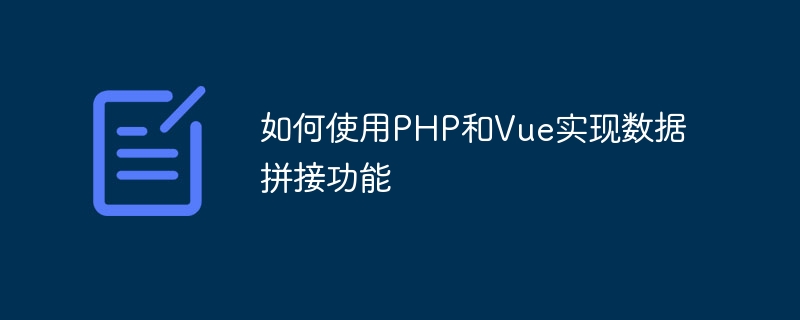

How to use PHP and Vue to implement the data splicing function
<?php
// 获取用户信息
function getUserInfo($userId) {
// 假设这里查询数据库获取用户信息
return [
'userId' => $userId,
'username' => 'John Doe',
'age' => 25
];
}
// 获取订单信息
function getOrderInfo($orderId) {
// 假设这里查询数据库获取订单信息
return [
'orderId' => $orderId,
'productName' => 'Example Product',
'price' => 50.00
];
}
// 获取用户信息和订单信息的接口
function getData($userId, $orderId) {
$userInfo = getUserInfo($userId);
$orderInfo = getOrderInfo($orderId);
// 返回用户信息和订单信息
return [
'userInfo' => $userInfo,
'orderInfo' => $orderInfo
];
}
// 获取请求参数
$userId = $_GET['userId'];
$orderId = $_GET['orderId'];
// 调用接口获取数据
$data = getData($userId, $orderId);
// 将数据以 JSON 格式返回给前端
header('Content-Type: application/json');
echo json_encode($data);
?><!DOCTYPE html>
<html>
<head>
<title>Data Concatenation Example</title>
<script src="https://cdn.jsdelivr.net/npm/vue"></script>
</head>
<body>
<div id="app">
<div>
<h1>User Info:</h1>
<p>Username: {{ userInfo.username }}</p>
<p>Age: {{ userInfo.age }}</p>
</div>
<div>
<h1>Order Info:</h1>
<p>Product Name: {{ orderInfo.productName }}</p>
<p>Price: ${{ orderInfo.price }}</p>
</div>
</div>
<script src="app.js"></script>
</body>
</html>Then, we need to write the Vue logic in the app.js file:
new Vue({
el: '#app',
data: {
userInfo: {},
orderInfo: {}
},
mounted() {
// 发送请求获取数据
this.getData(1, 100);
// 这里假设 userId 和 orderId 都是固定的
},
methods: {
getData(userId, orderId) {
// 发送异步请求获取数据
fetch(`http://localhost/api.php?userId=${userId}&orderId=${orderId}`)
.then(response => response.json())
.then(data => {
this.userInfo = data.userInfo;
this.orderInfo = data.orderInfo;
})
.catch(error => {
console.log(error);
});
}
}
})Through the above code example, we can see how to use PHP and Vue to implement the data splicing function. Write an interface in PHP, send asynchronous requests to obtain data through Vue, and use Vue's data binding on the front-end page to display the data on the page. In this way, the data splicing function is realized.
Summary
By using PHP and Vue, we can easily implement the data splicing function. As a server-side language, PHP is responsible for obtaining data, and Vue is responsible for displaying data on the front-end page. This combination allows us to achieve more flexible and dynamic data display needs. Hope this article is helpful to you.
The above is the detailed content of How to use PHP and Vue to implement data splicing function. For more information, please follow other related articles on the PHP Chinese website!




